Our body systems are intricately intertwined, each exerting a cause-and-effect influence on the others. Within this network, a notable connection emerges—the correlation between orthopedic conditions and cardiovascular health.
This February marks American Heart Month, emphasizing the importance of prioritizing cardiovascular health for all. Let’s explore this intersection and the impact of joint health on your heart.
Osteoarthritis
Osteoarthritis (OA) is an extremely common condition where the tissue in your joints degenerates over time due to wear and tear. But the joints aren’t the only part of your body that OA can affect, as your heart can take a toll. Individuals with OA are 3 times more likely to develop cardiovascular disease or suffer from heart failure when compared to non-arthritic individuals.1 Although heart conditions may be more common for those with OA, that doesn’t mean you can combat heart disease with exercise, weight loss, and medication.
Rheumatoid Arthritis
Rheumatoid arthritis (RA) is an autoimmune condition where the body’s immune system attacks the healthy cells of the joints in your body causing degeneration and inflammation. The chronic inflammation caused by RA puts other systems at risk such as the cardiovascular system. It was found that patients with RA have an elevated risk of cardiovascular disease and a 50-70% higher risk of heart disease compared to those without RA.2 To address this issue, antirheumatic medications and lifestyle changes can help mediate cardiovascular risks.
Spinal Conditions
Various spinal conditions such as spinal stenosis or a herniated disc can impact your mobility drastically, affecting your ability to exercise. Exercise and regular physical activity are necessary to maintain solid heart health. So when a patient’s physical activity is reduced due to a spinal condition, cardiovascular conditions such as obesity or hypertension are more likely to develop. While it may seem difficult to navigate this, working with an orthopedic surgeon or physical therapist to seek treatment for your spinal condition will benefit your spine and heart.
Joint Replacement
While joint replacement may not be a condition, it is an extremely common surgery that is conducted to help patients suffering from joint pain and immobility. But when getting a new joint, it is important to note the potential cardiovascular effects. Any major surgery puts stress on your body, increasing the risk of cardiac events such as heart attack, cardiac failure, or irregular heartbeat.3 While the complication risk of these surgeries is extremely low, your cardiovascular health must be considered when undergoing joint replacement. You can also avoid these risks by maintaining good cardiovascular practices before and after the surgery.
Understanding the interconnections of orthopedic conditions and cardiovascular risks will help you navigate your condition in a way that prioritizes both your joint and heart health.
AUTHOR: Dr. Jeffrey S. Staron is a board-certified orthopedic surgeon who is fellowship trained in sports medicine. Dr. Staron provides comprehensive care for the musculoskeletal system treating acute injuries and chronic joint pain in Munster, Indiana.
- https://www.arthritis.org/health-wellness/about-arthritis/related-conditions/other-diseases/osteoarthritis-could-be-risky-to-your-heart
- https://www.ncbi.nlm.nih.gov/pmc/articles/PMC5789778/
- https://www.arthritis.org/health-wellness/treatment/joint-surgery/safety-and-risks/heart-risks-with-joint-replacement-surgery


